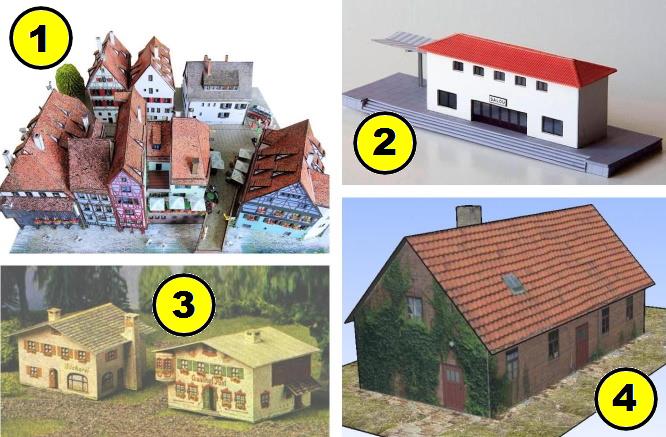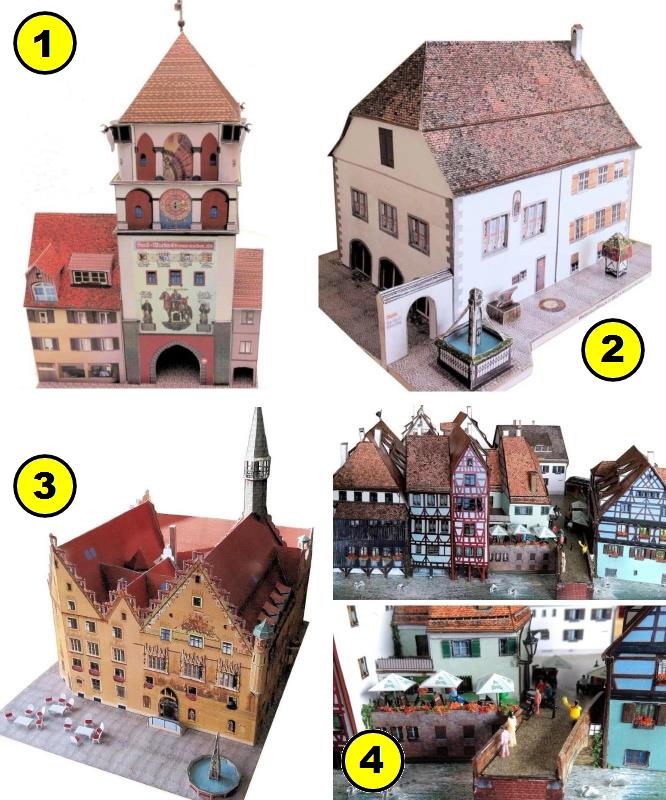Offered by the talented team of designers from Kallboys, German website, this is the paper model of the Church of St. Laurentius in Mondorf as it looked in 1960.
The whole model consists of 219 pieces divided into fifteen sheets of paper and is in 1/87 scale (H0 scale).
This papercraft was made using floor plans and photos of the church around 1960 and more photos taken during the renovations carried out between 1964 and 1966.
The Church of St. Laurentius in Mondorf, Germany, is a relatively modern church, built in 1960. Despite its relatively young age compared to some older European churches, it has notable features and plays an important role in the local community.
The Church of St. Laurentius is a stunning example of modern sacred architecture. Despite following the traditional architectural styles associated with historic churches, this church also takes a more contemporary approach.
Its structure features clean lines, distinct geometric shapes and modern materials, reflecting the aesthetic and functional ideals of the time in which it was built. Although it is a modern church,
St. Laurentius Church still preserves important traditional elements, such as the stained glass windows. Stained glass windows are striking features in many churches, as they allow colored light to enter, creating a spiritual and inspiring atmosphere inside the building. St. Laurentius Church's stained glass windows feature both contemporary and traditional designs, adding to the visual beauty of the space.
In addition to being a place of worship, St. Laurentius Church plays a vital role as a community center. It hosts a variety of events and activities, including religious services, special ceremonies, musical performances, study groups, and community meetings.
This active participation in the life of the local community strengthens the ties between residents and the church, making it a focal point not only for faith, but also for social and cultural life.
Oferecido pela talentosa equipe de designers do site Kallboys, da Alemanha, este é o modelo de papel da Igreja de St. Laurentius, em Mondorf, tal qual ela era em 1960.
O modelo todo é composto por 219 peças divididas em quinze folhas de papel e está na escala 1/87 (escala H0).
Este papercraft foi feito usando-se como base plantas baixas e fotos da igreja por volta de 1960 e mais fotos tiradas durante as reformas feitas entre 1964 1966.
A Igreja de St. Laurentius em Mondorf,na Alemanha, é uma igreja relativamente moderna, construída em 1960. Apesar de sua idade relativamente jovem em comparação com algumas igrejas europeias mais antigas, ela possui características notáveis e desempenha um papel importante na comunidade local.
A Igreja de St. Laurentius é um exemplo impressionante de arquitetura sacra moderna. Apesar de seguir os estilos arquitetônicos tradicionais associados às igrejas históricas, esta igreja também adota uma abordagem mais contemporânea.
Sua estrutura apresenta linhas limpas, formas geométricas distintas e materiais modernos, refletindo os ideais estéticos e funcionais da época em que foi construída.
Embora seja uma igreja moderna, a Igreja de St. Laurentius ainda preserva elementos tradicionais importantes, como as janelas de vitral. Os vitrais são características marcantes em muitas igrejas, pois permitem a entrada de luz colorida, criando uma atmosfera espiritual e inspiradora no interior do edifício. As janelas de vitral da Igreja de St. Laurentius podem apresentam designs contemporâneos e tradicionais, contribuindo para a beleza visual do espaço.
Além de ser um local de culto, a Igreja de St. Laurentius desempenha um papel vital como centro comunitário. Ela hospeda uma variedade de eventos e atividades, incluindo serviços religiosos, cerimônias especiais, apresentações musicais, grupos de estudo e reuniões comunitárias.
Essa ativa participação na vida da comunidade local fortalece os laços entre os residentes e a igreja, tornando-a um ponto focal não apenas para a fé, mas também para a vida social e cultural.




























